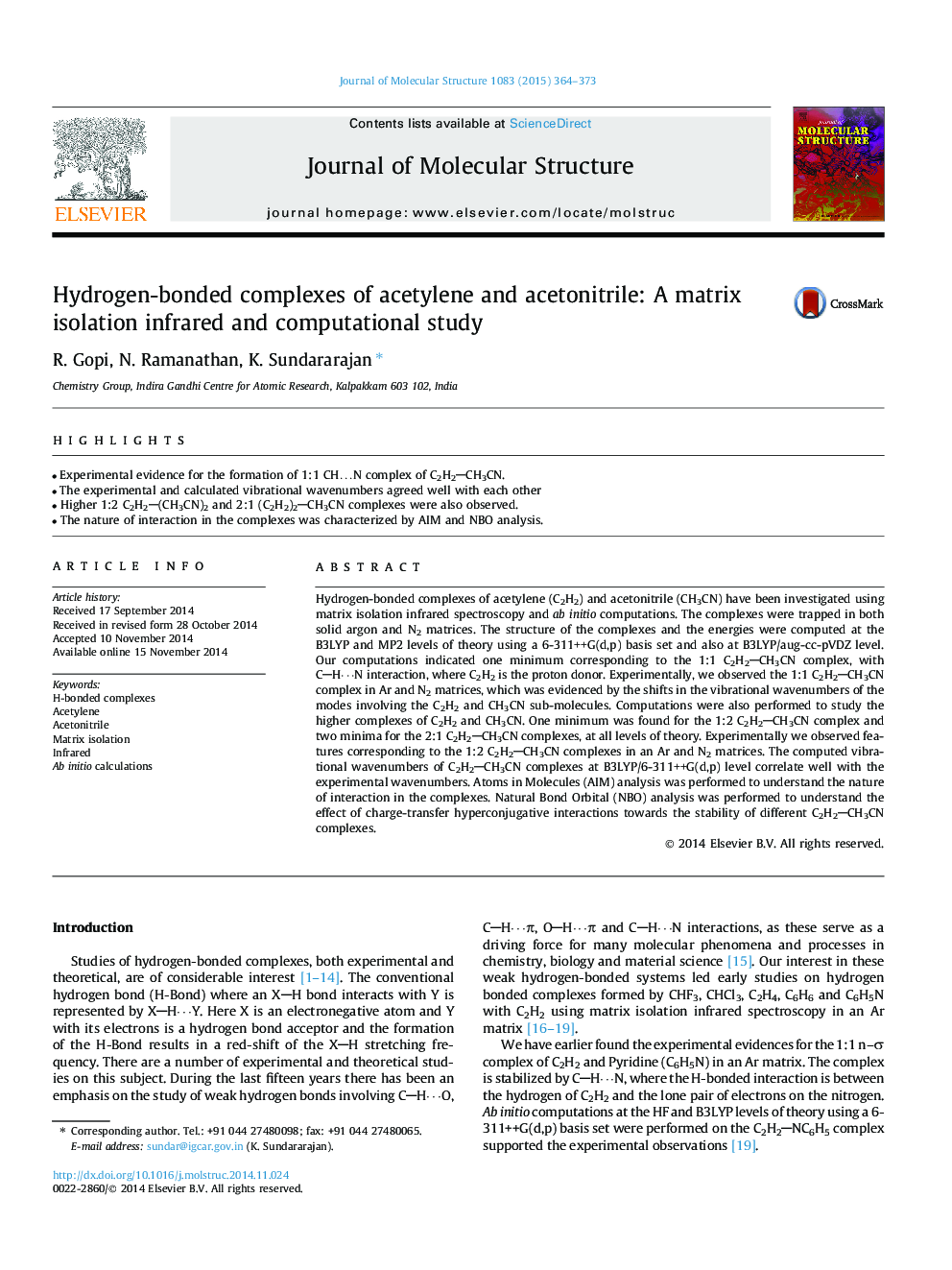| Article ID | Journal | Published Year | Pages | File Type |
|---|---|---|---|---|
| 7809788 | Journal of Molecular Structure | 2015 | 10 Pages |
Abstract
Hydrogen-bonded complexes of acetylene (C2H2) and acetonitrile (CH3CN) have been investigated using matrix isolation infrared spectroscopy and ab initio computations. The complexes were trapped in both solid argon and N2 matrices. The structure of the complexes and the energies were computed at the B3LYP and MP2 levels of theory using a 6-311++G(d,p) basis set and also at B3LYP/aug-cc-pVDZ level. Our computations indicated one minimum corresponding to the 1:1 C2H2CH3CN complex, with CHâ¯N interaction, where C2H2 is the proton donor. Experimentally, we observed the 1:1 C2H2CH3CN complex in Ar and N2 matrices, which was evidenced by the shifts in the vibrational wavenumbers of the modes involving the C2H2 and CH3CN sub-molecules. Computations were also performed to study the higher complexes of C2H2 and CH3CN. One minimum was found for the 1:2 C2H2CH3CN complex and two minima for the 2:1 C2H2CH3CN complexes, at all levels of theory. Experimentally we observed features corresponding to the 1:2 C2H2CH3CN complexes in an Ar and N2 matrices. The computed vibrational wavenumbers of C2H2CH3CN complexes at B3LYP/6-311++G(d,p) level correlate well with the experimental wavenumbers. Atoms in Molecules (AIM) analysis was performed to understand the nature of interaction in the complexes. Natural Bond Orbital (NBO) analysis was performed to understand the effect of charge-transfer hyperconjugative interactions towards the stability of different C2H2CH3CN complexes.
Related Topics
Physical Sciences and Engineering
Chemistry
Organic Chemistry
Authors
R. Gopi, N. Ramanathan, K. Sundararajan,
